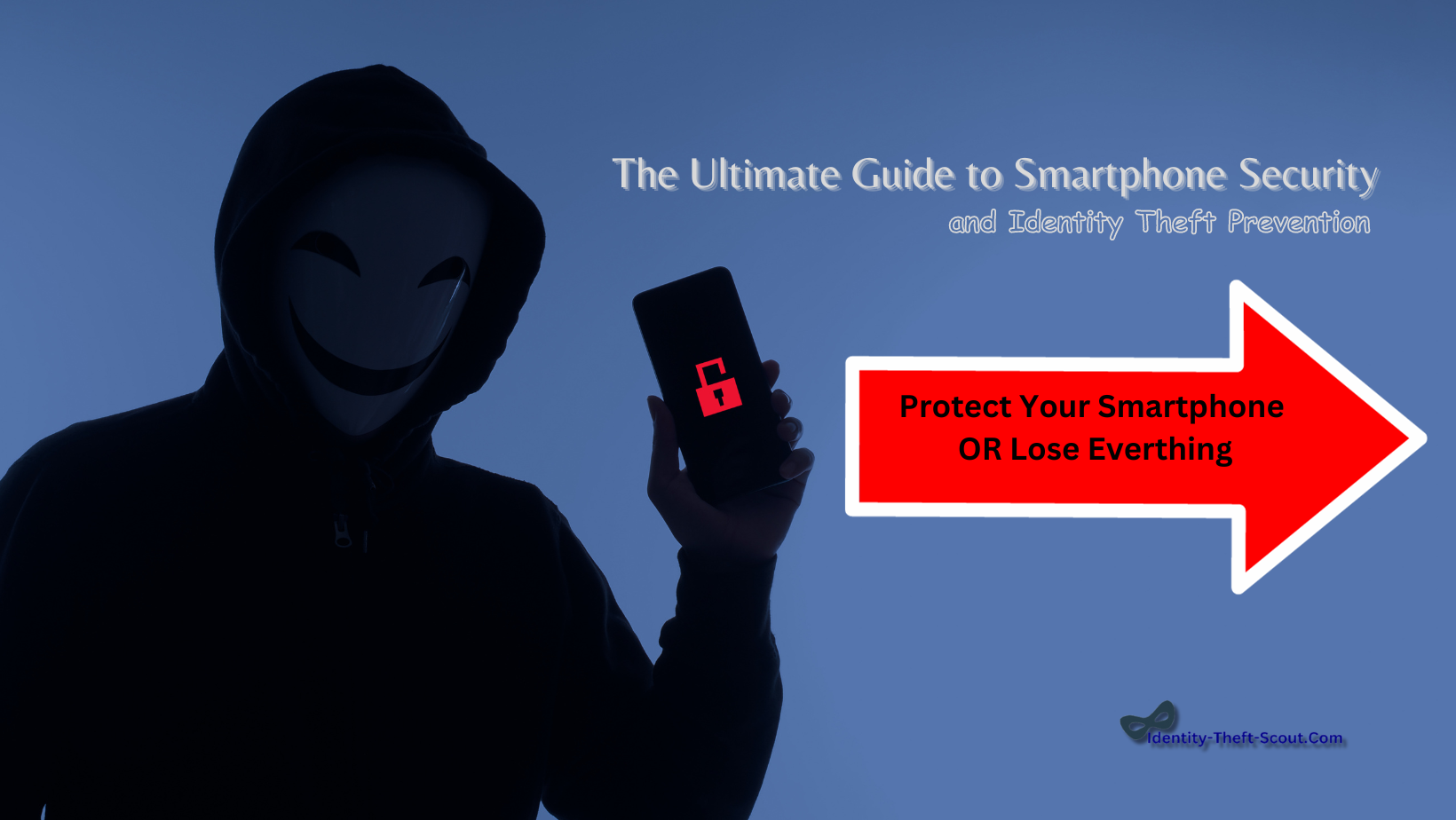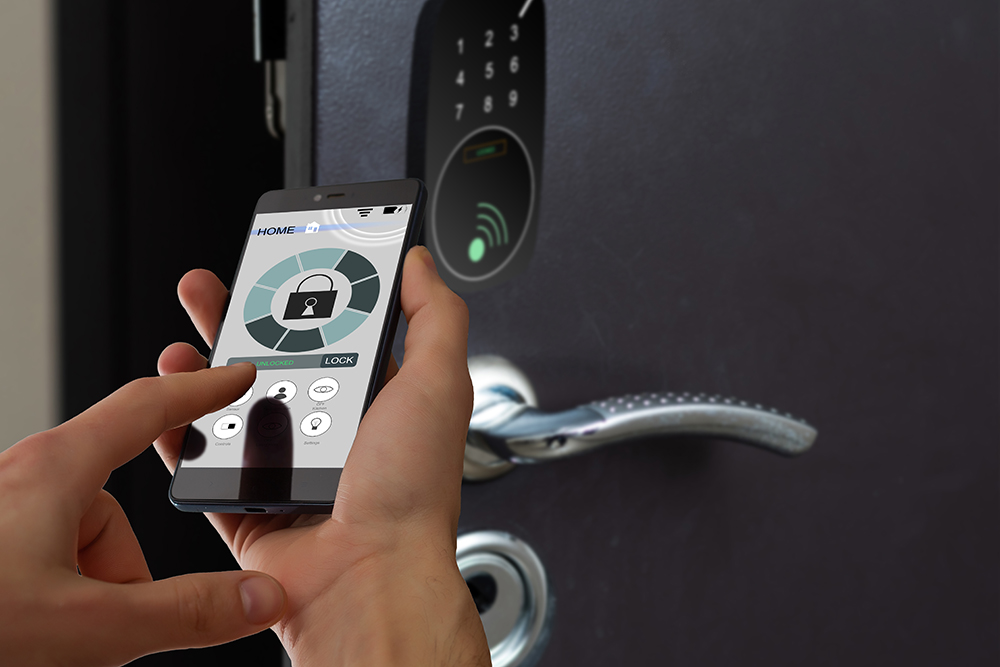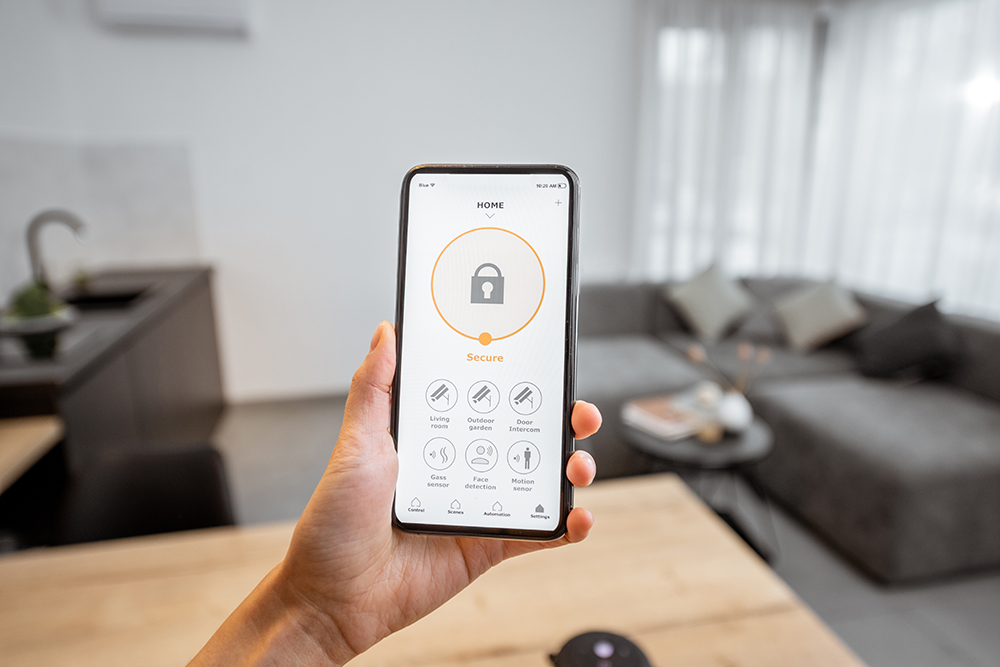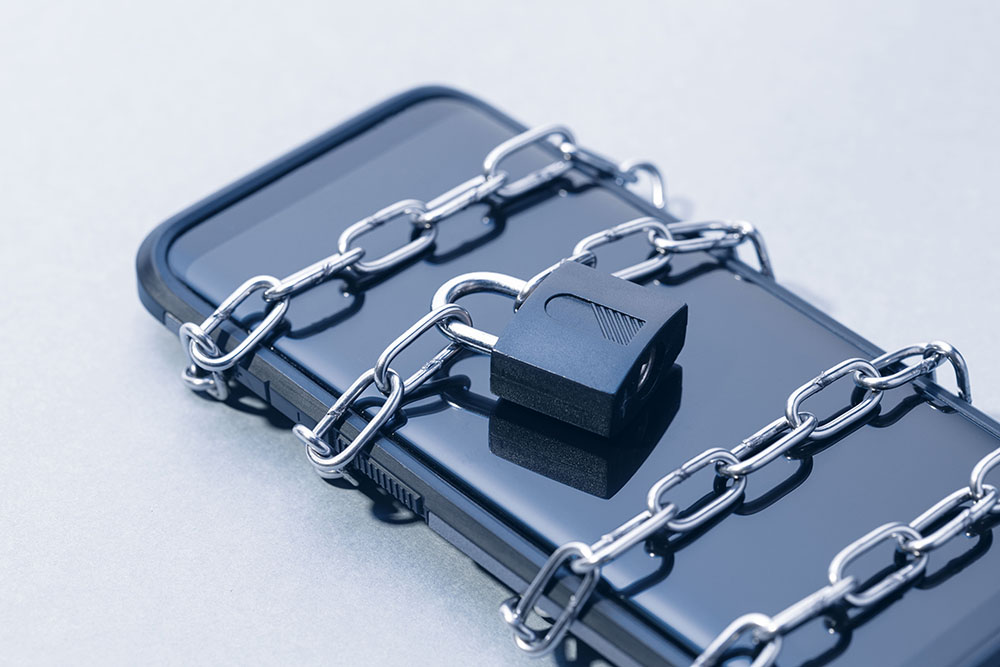When I lost my smartphone out bushwalking, I was in a panic because it was my two-factor SMS identification for my financial and business links. It was a disaster. I had not read a guide like this. Do you have a backup of your smartphone data to the cloud or a Where’s My Droid app or similar app installed? This article is written to prevent a disaster from happening to you too and then having to spend days rebuilding your smartphone security. You need to get control of your smartphone. Why? It is not only about identity theft prevention and data protection. It is also about feeling safe with your online security and privacy – let alone the time it takes to feel in control of your digital life again. I have learnt my lesson the hard way! Take my advice, protect yourself today!
Your smartphone is a powerful tool that keeps you connected to the world, but it is also a prime target for hackers and identity thieves. That is why it is essential to protect your smartphone and its personal information.
This article provides a comprehensive guide to smartphone security and identity theft prevention. Learn how to:
- Use strong passwords and two-factor authentication.
- Keep your software up to date.
- Be careful about what apps you install.
- Be cautious about what links you click on
- Use a VPN when connecting to public Wi-Fi.
- Install and use smartphone security apps.
- Configure your smartphone’s security settings.
What is Smartphone Security
Smartphone security protects your smartphone from unauthorized access, use, disclosure, disruption, modification, or destruction. This includes protecting your smartphone from malware, phishing, social engineering, and other threats.
Why is smartphone security important
Smartphones contain many personal information details, such as contacts, photos, messages, financial data, and location. If this information falls into the wrong hands, it could be used for identity theft, fraud, or other crimes.
In addition, smartphones are often used to access sensitive business data and networks. If a smartphone is compromised, it could give hackers access to confidential company information.
The most common smartphone security threats
There are several common smartphone security threats, including:
- Malware: Malware is malicious software that can damage your smartphone or steal your personal information. Malware can be installed on your smartphone through infected apps, phishing attacks, or malicious websites.
- Phishing attacks are attempts to trick you into revealing sensitive information, such as your passwords or credit card numbers. Phishing attacks can be conducted via email, text, or social media.
- Social engineering attacks: Social engineering attacks are attempts to trick you into taking a specific action, such as clicking on a malicious link or downloading an infected app. Social engineering attacks can be conducted in person, over the phone, or online.
- Man-in-the-middle attacks occur when a hacker intercepts your communication with another device. This could happen when you are using an unsecured Wi-Fi network.
- Lost or stolen devices: A lost, or stolen smartphone is a significant security risk, especially if it is not password protected. If your smartphone is lost or stolen, someone could access your personal information or even use your phone to commit crimes.
How to protect your smartphone from hackers and identity thieves
There are several steps you can take to protect your smartphone from hackers and identity thieves, including:
- Use strong passwords and two-factor authentication: Use a strong password for your smartphone and enable two-factor authentication where possible. This will make it more difficult for someone to gain unauthorized access to your device.
- Keep your software updated: Software updates often include security patches that can help protect your smartphone from known vulnerabilities. Make sure to install software updates as soon as they are available.
- Be careful about what apps you install: Only install apps from trusted sources, such as the official Google Play Store or Apple App Store. Read app reviews before installing and check the permissions requested by apps.
- Be careful about what links you click on: Be wary of links in emails, text messages, and social media posts. Hover over links before clicking to see the URL and use a link checker to check suspicious links.
- Use a VPN when connecting to public Wi-Fi: A VPN encrypts your traffic, making it more difficult for hackers to intercept your data when using a public Wi-Fi network.
Conclusion
Smartphone security is essential because smartphones contain a wealth of personal and sensitive information. Following the tips in this article can help protect your smartphone from hackers and identity thieves.
Smartphone security protects your smartphone from unauthorized access, use, disclosure, disruption, modification, or destruction. This includes protecting your smartphone from malware, phishing, social engineering, and other threats.
Why is smartphone security important
Smartphones contain many personal information details, such as contacts, photos, messages, financial data, and location. If this information falls into the wrong hands, it could be used for identity theft, fraud, or other crimes.
In addition, smartphones are often used to access sensitive business data and networks. If a smartphone is compromised, it could give hackers access to confidential company information.
The most common smartphone security threats
There are several common smartphone security threats, including:
- Malware: Malware is malicious software that can damage your smartphone or steal your personal information. Malware can be installed on your smartphone through infected apps, phishing attacks, or malicious websites.
- Phishing attacks are attempts to trick you into revealing sensitive information, such as your passwords or credit card numbers. Phishing attacks can be conducted via email, text, or social media.
- Social engineering attacks: Social engineering attacks are attempts to trick you into taking a specific action, such as clicking on a malicious link or downloading an infected app. Social engineering attacks can be conducted in person, over the phone, or online.
- Man-in-the-middle attacks occur when a hacker intercepts your communication with another device. This could happen when you are using an unsecured Wi-Fi network.
- Lost or stolen devices: A lost, or stolen smartphone is a significant security risk, especially if it is not password protected. If your smartphone is lost or stolen, someone could access your personal information or even use your phone to commit crimes.
How to protect your smartphone from hackers and identity thieves
There are several steps you can take to protect your smartphone from hackers and identity thieves, including:
- Use strong passwords and two-factor authentication: Use a strong password for your smartphone and enable two-factor authentication where possible. This will make it more difficult for someone to gain unauthorized access to your device.
- Keep your software updated: Software updates often include security patches that can help protect your smartphone from known vulnerabilities. Make sure to install software updates as soon as they are available.
- Be careful about what apps you install: Only install apps from trusted sources, such as the official Google Play Store or Apple App Store. Read app reviews before installing and check the permissions requested by apps.
- Be careful about what links you click on: Be wary of links in emails, text messages, and social media posts. Hover over links before clicking to see the URL and use a link checker to check suspicious links.
- Use a VPN when connecting to public Wi-Fi: A VPN encrypts your traffic, making it more difficult for hackers to intercept your data when using a public Wi-Fi network.
Conclusion
Smartphone security is essential because smartphones contain a wealth of personal and sensitive information. Following the tips in this article can help protect your smartphone from hackers and identity thieves.
Smartphone Security Apps
Smartphone security apps can help protect your smartphone from various threats, including malware, phishing attacks, and social engineering attacks. However, choosing the right security apps for your needs and using them properly is essential.
Here are some of the most common types of smartphone security apps
- Antivirus apps: Antivirus apps scan your smartphone for malware and can remove infected files.
- Anti-malware apps: Anti-malware apps are like antivirus apps, but they may focus on specific types of malware, such as adware or spyware.
- Anti-spam apps: Anti-spam apps can help filter outt spam calls and text messages.
- App lock apps: App lock apps allow you to password-protect individual apps on your smartphone.
- VPN apps: VPN apps encrypt your traffic, making it more difficult for hackers to intercept your data when using a public Wi-Fi network.
When choosing smartphone security apps, it is essential to consider the following factors
- The features you need: Consider what features are important to you, such as antivirus scanning, anti-spam filtering, or app locking.
- The reputation of the developer: Choose security apps from reputable developers.
- The reviews of other users: Read reviews of security apps before installing them.
Once you have installed smartphone security apps, it is essential to use them properly. For example, schedule regular antivirus scans and keep your security apps up to date.
Here are some additional tips for using smartphone security apps effectively
- Only install security apps from trusted sources, such as the official Google Play Store or Apple App Store.
- Read the permissions requested by security apps before installing them.
- Keep your security apps up to date.
- Schedule regular antivirus scans.
- Enable two-factor authentication for security apps.
Conclusion
Smartphone security apps can be a valuable tool for protecting your smartphone from hackers and identity thieves. However, choosing the right security apps for your needs and using them properly is essential.
Lock screens are like the front door to your digital life. Keep them locked.
Smartphone Security Settings
Your smartphone’s security settings can protect your device from unauthorized access and use. Here are some critical security settings to enable and configure:
Enable screen lock
A screen lock prevents unauthorized access to your smartphone, even if it is lost or stolen. There are a variety of screen lock options available, including:
- PIN: A PIN is a numeric code that you enter to unlock your smartphone.
- Pattern: A pattern is a sequence of dots you swipe across your screen to unlock your smartphone.
- Password: A password is a combination of letters, numbers, and symbols that you enter to open your smartphone.
- Fingerprint scanner: A fingerprint scanner uses your fingerprint to unlock your smartphone.
- Face recognition: Face recognition uses your face to unlock your smartphone.
To set up a screen lock on your smartphone
- Open the Settings app.
- Tap Security.
- Tap Screen lock.
- Select the type of screen lock you want to use.
- Follow the on-screen instructions to set up your screen lock.
Enable Find My Device
Find My Device is a service that can locate your lost or stolen smartphone. You can use Find My Device to:
- See the location of your smartphone on a map.
- Play a loud sound to help you find your smartphone.
- Erase all the data on your smartphone.
To enable Find My Device on your smartphone
- Open the Settings app.
- Tap Security.
- Tap Find My Device.
- Toggle on Find My Device.
Disable unknown sources
Unknown sources are apps installed from outside the official Google Play Store or Apple App Store. Installing apps from unknown sources can put your smartphone at risk of malware infection.
To turn off unknown sources on your smartphone
- Open the Settings app.
- Tap Security.
- Toggle off Unknown sources.
Set permission restrictions for apps
App permissions are the permissions that apps request to access certain features or data on your smartphone. Setting permission restrictions for apps to protect your privacy and security is essential.
To set permission restrictions for apps on your smartphone
- Open the Settings app.
- Tap Apps.
- Tap See all apps.
- Tap the app that you want to impose permission restrictions.
- Tap Permissions.
- Toggle on or off the permissions you want to allow or deny for the app.
Set up two-factor authentication for apps
Two-factor authentication (2FA) adds an extra layer of security to your apps by requiring you to enter a code from your phone in addition to your password.
To set up 2FA for apps on your smartphone
- Open the Settings app.
- Tap Security.
- Tap Two-factor authentication.
- Toggle on Two-factor authentication.
- Open the app that you want to set up 2FA for.
- Follow the on-screen instructions to set up 2FA.
By enabling and configuring these critical security settings, you can help protect your smartphone from unauthorized access, use, and malware infection.
Conclusion
Smartphone security is essential because smartphones contain a wealth of personal and sensitive information. Following the best practices and tips in this article can help protect your smartphone from hackers and identity thieves.
A strong password is the first line of defense for smartphone security.
Smartphone Security Best Practices
- Keep your software up to date.
- Use strong passwords and two-factor authentication.
- Be careful about what apps you install.
- Be cautious about what links you click on
- Use a VPN when connecting to public Wi-Fi.
- Back up your smartphone regularly
- Be cautious about what information you share online.
- Be aware of the latest smartphone security frauds.
Resources for more information
- National Cybersecurity Alliance: https://www.staysafeonline.org/
- Federal Trade Commission: https://www.ftc.gov/
- Department of Homeland Security: https://www.dhs.gov/
Additional tips
- Protect your smartphone from physical theft and loss.
- Keep your smartphone’s data safe when traveling.
- Educate children about smartphone security.
Secure your smartphone; it’s the guardian of your digital identity.
Conclusion
Following the smartphone security best practices and tips in this article, you can help protect your smartphone from hackers and identity thieves. It is also important to stay informed about the latest smartphone security scams and to educate children about smartphone security.


















